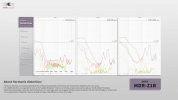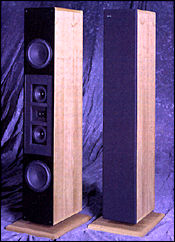- Joined
- Aug 13, 2022
- Messages
- 97
- Likes
- 893
Measurement Conditions Explanation And Chart Interpretation Of Cuckoo Studio Review

Measurement Conditions Explanation And Chart Interpretation Of Cuckoo Studio Review
What you are about to read is the measurement conditions explanation and chart interpretation of Cuckoo Studio Review. This will help you better understand our measurement conditions, address any doubts about our data, and assist you in better understanding the information we aim to convey...
 www.audiosciencereview.com
www.audiosciencereview.com
We have received the Sony MDR-Z1R headphones sent by WSGM. appreciate his support for the channel.
The Z1R comes in two versions: the in-ear version called IER-Z1R and the over-ear version called MDR-Z1R. Both of them are quite expensive, with the over-ear version consistently priced around $1500. The design direction of the MDR-Z1R is minimalist. It features an all-black body with no flashy elements. However, the large, non-centrally symmetrical raised fine mesh grille on the back gives it a strong sense of identity while remaining understated.
The L&R markings are on the inner side, and the adjustment of the headband tension is very smooth. The angled driver design often seen in flagship headphones is also present. The cable is detachable, and a threaded design is implemented to securely fasten the cable. Despite weighing approximately 390g, which may seem heavy on paper, the dual-axis rotating design, along with the large and soft ear cups that can accommodate the entire ear, as well as the appropriate clamping force and cushioning on the headband, make it comfortable to wear the Z1R for extended periods without feeling fatigued.










Let's take a look at its sound performance.
Raw data for ASR:
to harman 2013 without bassboost:
Frequency Response:
Using the Harman 2013 target curve as a reference, we can see that the sound of the MDR-Z1R exhibits a slight V-shaped curve. The overall attenuation in the mid frequencies controlled within 6dB range. There are some variable high-frequency peaks that change with the fit of the headphones, mainly distributed in the airy frequency range. Additionally, there is an peak around 3-4kHz that seems to closely resemble the human auditory peak, but with a relatively large Q value.
The MDR-Z1R exhibits excellent low distortion performance. Overall distortion above 100Hz can be controlled within -60dB below 0.1%. Below 100Hz, there is some typical distortion that is common in dynamic driver headphones, but the amount is not significant. Even when pushed to the limits during testing, it shows a relatively low level of distortion. The left and right channels maintain a high level of consistency in terms of distortion. The individual unit quality control is excellent.
The 6dB attenuation in the mid frequencies reduces the volume and creates a slightly distant feeling for the main instruments and vocals. The high frequencies, such as airiness and high-frequency percussion, have increased volume, but the amplitude is well-controlled. In terms of left and right consistency, the MDR-Z1R performs well among over-ear headphones, providing a solid center imaging. Apart from testing the internal assembly stability, the quality control and durability of the large ear cups are also put to the test.
I have removed all subjective comments regarding my personal feelings. Whether you like this pair of headphones or not, please discuss it in the comments.
Attachments
Last edited:







